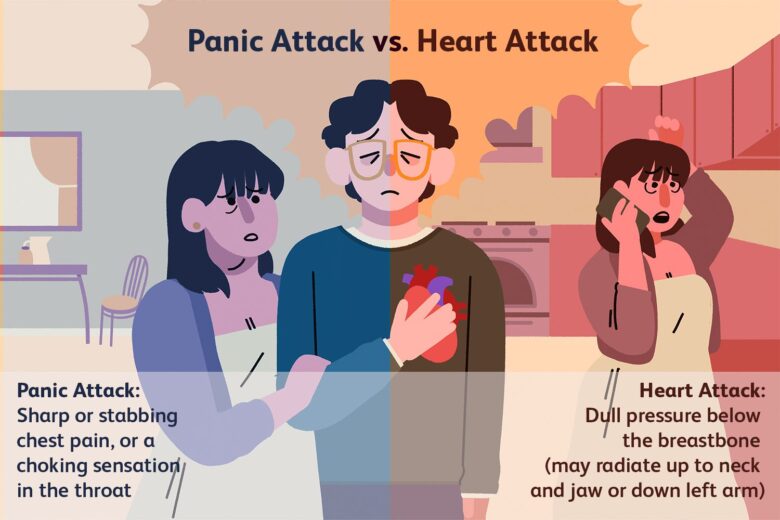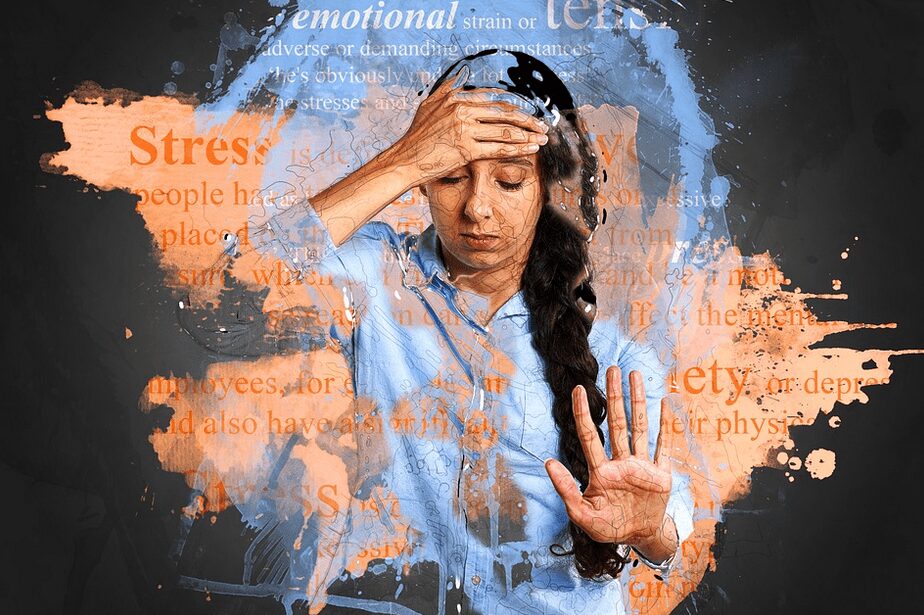Numbers by the Anxiety & Depression Association of America indicate that anywhere between 2 to 3 percent of adults in the US struggle with panic disorder in a given year. And panic attacks don’t just affect people with the disorder. In fact, between 35 to 40 percent of people experience a panic attack at some point in their lives. Similarly, over 31 percent of American adults have an anxiety disorder during their lifetime. And on the whole, Americans feel much more anxious than before. This creates an environment where it’s easy to develop a panic or anxiety attack.
But are they the same thing? If anxiety and panic attacks aren’t the same, what makes them different? Let’s unpack these terms to find out what they mean, how they’re different, and what you can do to alleviate them.

Source: verywellhealth.com
Contents
What is a Panic Attack?
When you have a panic attack, you experience a sudden increase in fear and discomfort, along with mental and physical symptoms. It’s a brief episode that usually peaks within minutes and eventually subsides. Common symptoms include chest pain, shaking, trembling, and feeling disconnected from your surroundings.
What is Anxiety?
Anxiety is the result of your body’s fight or flight response, designed to help you avoid threats or dangers. But when anxiety persists in the absence of a threat or after a potential threat is removed, it can become disruptive to daily activities.
Although there’s no such term as an ‘anxiety attack’ in the APA’s fifth edition of the DSM, common symptoms include feelings of apprehension, distress, and restlessness. When it becomes chronic, it’s linked to the development of an anxiety disorder, which happens when you’re unable to function due to heightened levels of anxiety. To learn more about anxiety disorders.
Differences Between Panic Attacks and Anxiety Attacks

Source: springhealth.com
Because of the similarities between panic attacks and heightened anxiety, people may use the terms interchangeably. To understand which one you’re experiencing, you need to consider how they’re similar and different.
Anxiety attacks and panic attacks have some symptoms in common, such as:
- Increased heart rate, which feels as if your heart is racing
- Shortness of breath, indicated by fast, shallow breaths
Other similarities include sweating and feeling nauseous, but that’s about it. Now, let’s move on to the differences.
Sudden and Intense vs. gradual Buildup
The first difference you’ll spot between an anxiety and a panic attack is the onset. Panic attacks happen suddenly and without any warning. Not to mention, the symptoms can be debilitating as the episode peaks within minutes. In some cases, people experiencing a panic attack may even struggle to ask for assistance. Meanwhile, anxiety progresses slowly over time, and instead of being sudden, it occurs in response to certain triggers or stressors that can potentially cause it.
Sense of Detachment Vs Irritability
According to the DSM-5 by the APA, depersonalization and derealization are common symptoms of panic attacks. They refer to the feeling of being detached from your body and observing your life as an outsider (depersonalization) and feeling like you’re detached from your surroundings (derealization).
On the other hand, feeling overwhelmed with worry because of anxiety leads to fatigue. When it seems like your energy levels have depleted, it’s much more difficult to stay calm in stressful situations. It’s why you may seem irritable and angrier when anxious.
Short-Lived Vs. Long-Lasting
How long an episode lasts is a good way to determine whether you’re experiencing anxiety or a panic attack. In a panic attack, your physical symptoms peak within minutes, so the entire episode can last anywhere between a few minutes and half an hour. While symptoms last a couple of minutes, the emotional effects of going through a panic attack can last for hours. Anxiety, on the other hand, can last for days, weeks, or months because of its gradual buildup.
Can Occur Without Warning Vs. Response to Stress
Panic attacks usually occur due to a trigger, such as excessive stress or activities that cause physical reactions (hyperventilation or caffeine consumption). However, they can also occur suddenly without warning. In contrast, anxiety is a response to a perceived threat or stressor, like attending an important interview or giving a major test.
Can You Have Both Anxiety and a Panic Attack?

Source: unsplash.com
Because anxiety and panic attacks have emotional and physical symptoms in common, it’s possible to experience both at the same time. When you’re in a stressful situation that makes you feel anxious, like giving a major presentation at work, you’ll feel nervous and worried while preparing for it. While you’re anxious, symptoms can vary in intensity from mild to severe.
Then, when it’s time to start the presentation, your anxiety may build up to a panic attack. You’ll experience highly intense and disruptive symptoms that cause feelings of detachment. Similarly, people with anxiety disorders such as social anxiety or generalized anxiety are at a higher risk of experiencing panic attacks.
Diagnosing and Treating Panic Attacks and Anxiety Attacks

Source: life-care-wellness.com
Mental health practitioners can diagnose anxiety and anxiety disorders, as well as panic attacks and panic disorders. To provide a diagnosis, they’ll take your medical history, conduct a physical exam, perform blood tests, and take a psychological evaluation. They’ll also determine if you meet the criteria of a panic attack, panic disorder, or anxiety disorder.
Psychotherapy
Whether you’ve experienced panic attacks or anxiety attacks, psychotherapy is the most common approach to treatment. It’s proven to be as effective as medication in the long term and doesn’t cause any side effects, which makes it the first line of defense when addressing many mental health disorders.
During psychotherapy sessions, your therapist will take a specific approach or adopt aspects from different approaches based on your needs. Some common approaches include CBT, exposure therapy, and holistic therapy.
Medication
In some cases, practitioners prescribe medication to alleviate severe symptoms. Commonly prescribed medications for anxiety and panic attacks include antidepressants such as SSRIs and SNRIs and anti-anxiety drugs like benzodiazepines.
Conclusion

Source: qls.com.au
To sum it up, anxiety attacks and panic attacks differ in terms of intensity, length of episode, and causes. Anxiety attacks occur in anticipation of a perceived threat, while panic attacks are more likely to occur when exposed to a stressful situation. However, the two cause similar symptoms, such as shortness of breath and increased heart rate, and can co-occur. Mental health practitioners also employ similar treatments to address both anxiety attacks and panic attacks, which include psychotherapy, medication, or a combination of both.
